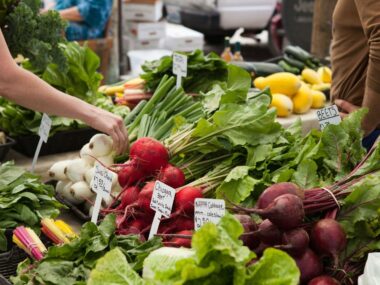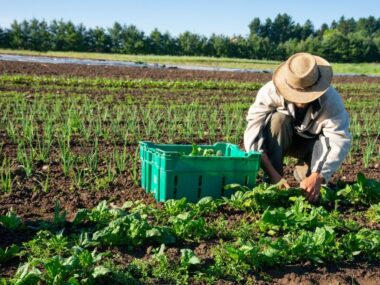- Introduction: Food safety and quality assurance are paramount in ensuring that the food we eat is safe, nutritious, and free from contaminants. From farm to fork, various stakeholders, including farmers, processors, distributors, regulators, and consumers, play critical roles in maintaining food safety standards and upholding quality assurance practices. In this comprehensive guide, we will explore the importance of food safety and quality assurance, key principles and practices, regulatory frameworks, and emerging trends shaping the future of food safety and quality management.

Man applying Insecticide
- Understanding Food Safety and Quality Assurance: Food safety refers to the conditions and practices that preserve the integrity of food products, preventing contamination and minimizing the risk of foodborne illnesses. Quality assurance, on the other hand, encompasses measures to ensure that food meets specified standards of quality, including attributes such as taste, appearance, texture, and nutritional value. Together, food safety and quality assurance efforts aim to protect public health, promote consumer confidence, and support fair trade practices in the food industry.
- Hazard Analysis and Critical Control Points (HACCP): Hazard Analysis and Critical Control Points (HACCP) is a systematic approach to food safety management that. identifies, evaluates, and controls hazards throughout the food production process. HACCP principles involve conducting hazard analysis, identifying critical control points (CCPs), establishing monitoring procedures, implementing corrective actions, and maintaining documentation to ensure compliance with food safety standards. By proactively addressing potential hazards, HACCP helps prevent foodborne illnesses and ensures the safety of food products.
- Good Agricultural Practices (GAPs): Good Agricultural Practices (GAPs) are guidelines and principles that farmers and growers follow to ensure the safe and sustainable production of crops and livestock. GAPs cover various aspects of farm management, including soil and water management, pesticide use, hygiene practices, and post-harvest handling. By adhering to GAPs, farmers minimize the risk of microbial contamination, pesticide residues, and environmental pollution, producing high-quality, safe food products for consumers.
- Food Processing and Manufacturing Standards: Food processing and manufacturing facilities must adhere to stringent standards and regulations to maintain food safety and quality throughout the production process. Good Manufacturing Practices (GMPs) provide guidelines for ensuring the hygienic design, operation, and maintenance of food processing facilities, equipment, and utensils. Quality control measures, such as product testing, inspection, and monitoring, verify compliance with quality specifications and regulatory requirements, ensuring consistency and safety in food products.
- Food Safety Management Systems: Food Safety Management Systems (FSMS) are comprehensive frameworks that organizations implement to manage food safety risks and ensure compliance with regulatory standards. International standards such as ISO 22000 and the Food Safety Modernization Act (FSMA) in the United States provide guidelines for developing and implementing FSMS, including hazard analysis, risk assessment, control measures, and continuous improvement processes. FSMS help food businesses identify and mitigate food safety hazards, enhance traceability, and demonstrate their commitment to food safety to consumers and regulatory authorities.
- Regulatory Frameworks and Compliance: Governments and regulatory agencies play a crucial role in establishing and enforcing food safety standards and regulations to protect public health and ensure the integrity of the food supply chain. Regulatory frameworks vary by country and region but generally include laws, regulations, and guidelines governing food production, processing, labeling, and distribution. Regulatory agencies conduct inspections, audits, and surveillance activities to monitor compliance with food safety standards and take enforcement actions against non-compliant businesses to mitigate food safety risks.
- Consumer Awareness and Education: Consumer awareness and education are essential for empowering individuals to make informed decisions about the food they eat and ensuring their active participation in food safety and quality assurance efforts. Educating consumers about proper food handling, storage, and preparation practices reduces the risk of foodborne illnesses and promotes responsible food consumption habits. Transparent labeling, product information, and consumer engagement initiatives enhance trust and confidence in the food supply chain, enabling consumers to make choices aligned with their preferences and values.
- Emerging Trends in Food Safety and Quality Assurance: Rapid advancements in technology, globalization of food supply chains, and evolving consumer preferences are driving emerging trends in food safety and quality assurance. Technologies such as blockchain, DNA sequencing, and artificial intelligence enable real-time monitoring, traceability, and authentication of food products, enhancing transparency and trust in the supply chain. Sustainability certifications, organic labeling, and fair-trade initiatives respond to growing consumer demand for ethically sourced, environmentally friendly, and socially responsible food products.
- Conclusion: Food safety and quality assurance are fundamental pillars of a healthy and sustainable food system, essential for safeguarding public health, ensuring consumer confidence, and supporting economic development. By adopting risk-based approaches, implementing robust food safety management systems, and fostering collaboration among stakeholders, we can build a resilient food supply chain that delivers safe, nutritious, and high-quality food products to consumers worldwide. Embracing innovation, promoting transparency, and empowering consumers through education and awareness are key strategies for addressing current and emerging challenges in food safety and quality assurance, paving the way for a more secure and sustainable future for food.










